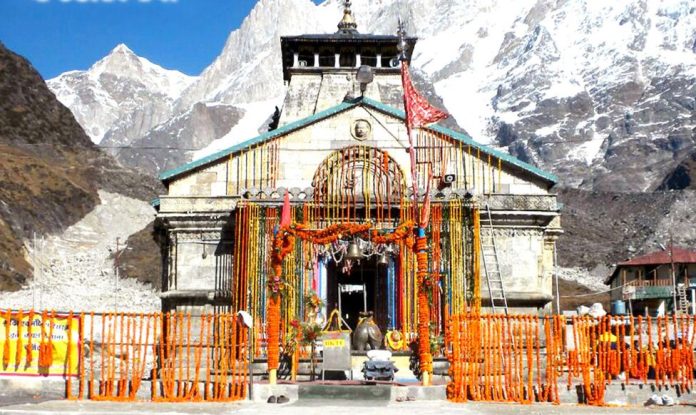By Journey Man
Uttarakhand is called Dev Bhoomi, or the land of gods. It has a number of temples dating back to thousands of years. The most famous among them are the temples located in the four locations of Badrinath, Kedarnath, Gangotri and Yamunotri, which are collectively referred as Char Dham.
Pilgrims from all over India and abroad visit the shrines as Char Dham yatra. The Char Dham yatra holds great importance and sanctity in Hindu religion. It is said that every Hindu should undertake Char Dham yatra at least once in a lifetime and get blessings of gods adorning the shrines.
Kedarnath Temple is one of the most famous temples of Lord Shiva. This temple is located on the Garhwal Himalaya ranges near the Mandakini River. Due to extreme weather conditions, the temple is only open between April (Akshaya Tritiya) and November (Karthik Purnima, Sharad Purnima). When the temple doors are closed during winter, the deity from the Kedarnath temple is taken to Ukhimath where the deity is worshipped for the next six months.
Hosting one of the most revered temple destinations of India, Kedarnath town is nestled in the mighty Garhwal Himalayas. The town, built around the revered temple, is located at an altitude of 3,580 m, near Chorabari glacier, which is the source of the Mandakini River. Dedicated to Lord Shiva, the ancient temple has exquisite architecture and is built of extremely large but evenly shaped grey stone slabs. A conical rock formation inside the temple is worshipped as Lord Shiva in his “Sadashiva” form.
Great position
The Kedarnath temple is one of the 12 Jyotirlingas of Lord Shiva in India. Behind the Kedarnath temple, stand the Kedarnath peak, Kedar Dome and other Himalayan peaks.
The historical name of this region is Kedar Khand and legend says, the Pandavas from the epic Mahabharata, after having defeated the Kauravas, felt guilty of having killed so many people and sought the blessings of Lord Shiva for redemption. The Lord eluded them repeatedly and took refuge at Kedarnath in the form of a bull. The Lord dived into the ground, leaving his hump on the surface at Kedarnath. The remaining portions of Lord Shiva appeared at four other places and are worshipped there.
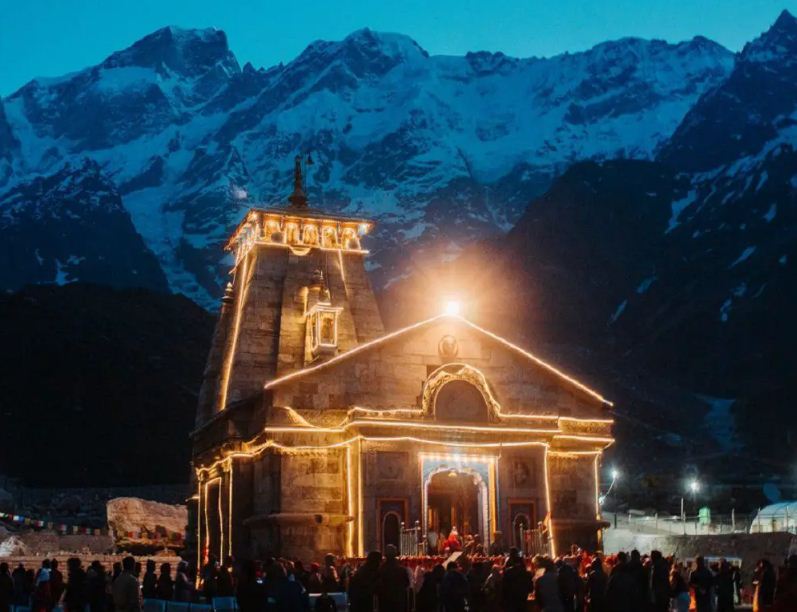

Kedar, meaning powerful, is another name of Lord Shiva the protector and the destroyer. The beautiful ambiance around the temple has the quiet peace of heaven and is best suited for meditation.
Shiva is considered the embodiment of all passions – love, hatred, fear, death and mysticism – which are expressed through his various forms. There are more than 200 shrines dedicated to Lord Shiva in the area itself, the most important one is Kedarnath.
The temple was said to have been built in the 8th century CE by Adi Shankaracharya. It is adjacent to the site of an earlier temple built by the Pandavas. The Kedarnath complex is being rehabilitated after 2013 Kedarnath floods. New facilities include helipads and new guest houses. Online facilities for Kedarnath booking are also there.
Online and physical puja
Kedarnath puja can be booked online and no physical presence of devotees is needed. Some pujas can be booked on the internet or in person.
The daily puja rituals at the Kedarnath temple start early morning, around 4 am with Maha Abhishek and end at around 7 pm with the Shyam aarti. The Kedarnath temple opens for darshan for the general public around 6 am.
Visitors can touch the idol and perform abhishek with ghee before 3 pm. After 5 pm, no one can approach idol, but they can avail darshan from a distance. The temple at Kedarnath opens only six months of the year when the sun enters the zodiac sign of Aries and Scorpio is in full-blown eclipse.
History and legends
There are various stories associated with Kedarnath Temple.
Legend 1: Legend goes that Nara and Narayana – two incarnations of Vishnu, performed severe penance in Badrikashram of Bharat Khand, in front of a Shivalingam fashioned out of the earth. Pleased with their devotion, Lord Shiva appeared before them and said that they may ask for a boon. Nar and Narayan requested Shiva to take up a permanent abode as a Jyotirlingam at Kedarnath so that all people who worship Shiva shall be freed from their miseries.
Hindu mythology: One of the most important stories about the creation of Kedarnath Dham is about how the Pandava brothers had made their way here in search of Shiv’ji. The story starts from the time when the Pandava brothers had won the Kurukshetra war by killing all their kin and committed a horrible sin.
According to the advice from their chief saint and philosopher the Pandava siblings travelled to the Himalayas, looking for the Lord. They made this pilgrimage via Haridwar, and searching for the lord they made their way to Guptkashi where the lord was, in the form of a bull.
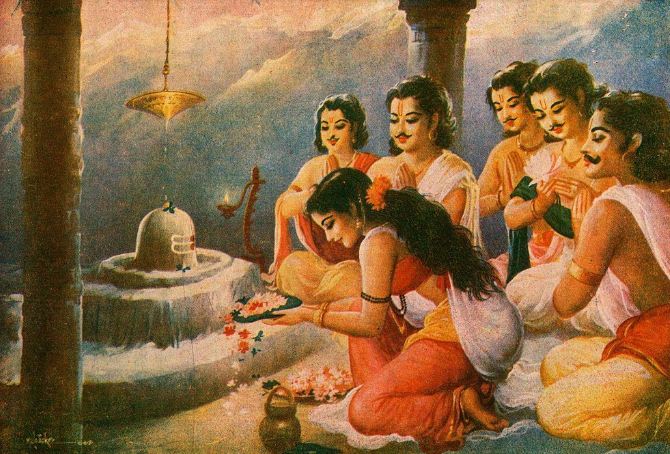

Bheem, however, recognized him and at that very moment this bull started to sink below the earth. Bheem went ahead and grabbed the bull by its tail and in this tug of war the face of this bull emerged in Nepal with its rear end in Kedar. When this happened, a jyotirlinga was established and the Pandavas were graced by the presence of the Lord himself. The Pandavas then asked for forgiveness and were granted the same.
The Lord told them that he would now reside inside the triangular shaped lingam. Ever since then the devotees make their way to the temple in search of piety.
Historical account: Kedarnath’s historical account can be dated back to the 8 century to the great sage, saint and philosopher Adi Shankaracharya. He is known for travelling all the way from his birthplace in Kerala to Kedarnath and throughout the way he established a number of maths, temples and pilgrimages. He established the chota char dham yatra in Devbhoomi, Uttarakhand with an aim of reviving the feeling of Hinduism among the general Hindu population.
He is believed to have spent a chunk of his lifetime in Kedarnath Dham and he also took passed away there. In order to commemorate this feat, a sacred shrine dedicated to Adi Shankara has been established right behind the temple. It has become a common tradition to pay homage and respect to the idol of Adi Shankara here.
After the floods
After the devastating flash floods of 2013 this Samadhi is being rebuilt in an underground chamber to keep it safe for future visitation.
Buried in snow for 400 years
Although the exact date of construction of the temple of Kedarnath is still a mystery, scientists have always been interested in digging out secrets which are held within this temple.
A research team from Dehradun went ahead to perform some research on the temple walls that could give them clue about the temple’s exact age. The results were shocking. It was discovered that the main temple of Kedarnath was buried inside a thick covering of snow for 400 years.
This result was arrived at by performing various tests on the outer walls of the temple which showed yellowish lines. Further research showed that these lines were a result of a mini ice age where the entire region of Rudraprayag was completely covered in ice. It is astonishing that even after this ice age period the temple was completely fine and not a single crack was seen.
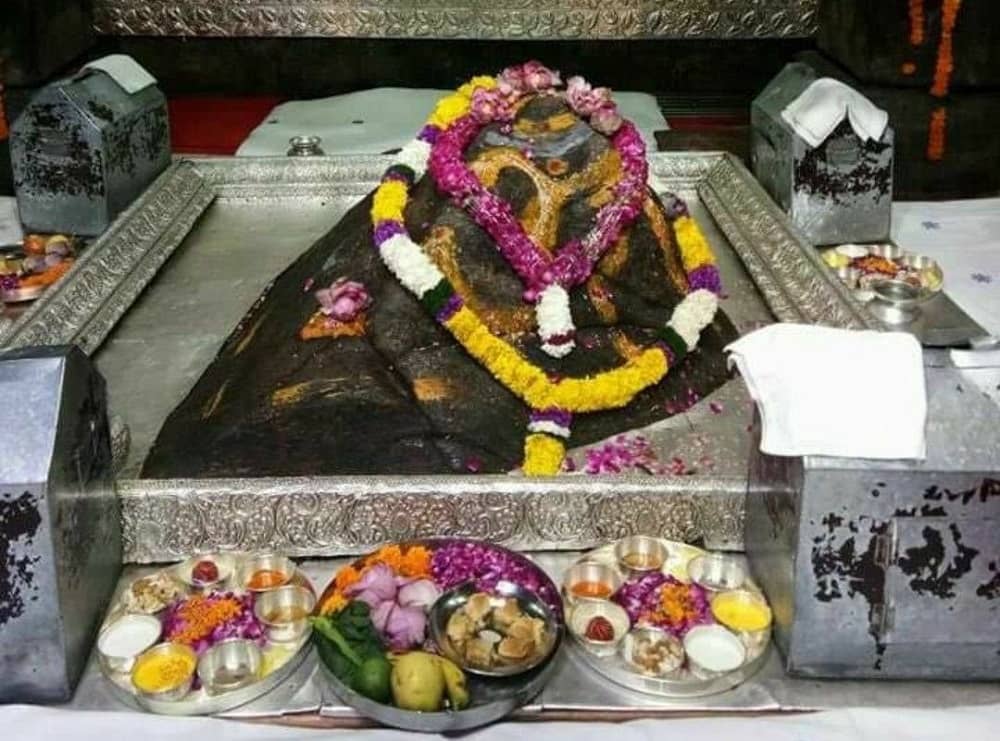

A few hundred years back there was a lot of snow in some areas at higher altitudes which resulted in glaciers moving over the land and displacing large rocks and stones. These natural occurrences were recorded by various people who noted down important dates on several walls of temples and will probably be recorded for many more ages to come. A scientist claimed that the temple not only survived being covered by ice for 400 years, but also escaped any serious damage from glacial movement when the freezing temperatures began to melt away as they always do.
BEST TIME TO VISIT
May to October is the best time to visit Kedarnath. During winter months, the town remains closed due to heavy snowfall.
How to reach Gaurikund to Kedarnath
For reaching the Kedarnath temple to cover a trek which is around 16 km from Gaurikund.
Trek to Kedarnath begins at Gaurikund. You can reach Gaurikund via shared jeep or taxi. Try to reach Gaurikund as early as possible, so before evening you will reach your destination. The trek is 2-3 hours long.
The breaks on the trek route
First break at jungle Chatti: Gaurikund to Jungle Chatti distance is around 4 km via Rambara bridge.
Second break at Bheembali: (Jungle Chatti To Bheembali – 3 km). This is a tea/coffee break and you can stay the night in Bheembali. Simple accommodations are available. Many devotees prefer this place for night stay so the next early morning they can start the remaining trek.
Third Break or night stay at Linchauli: (Bheembali To Linchauli – 4km) Linchauli is also recommended for night stay so you can start fresh in the morning. Many accommodations available in Linchauli.
Main stop for devotees at Kedarnath Base Camp: (Linchauli to Kedarnath Base Camp – 4 km) Many camps and accommodations are available here for night stay.
Kedarnath temple: (Kedarnath Base Camp to Kedarnath Dham – 1 KM ) There are long queues, so we it is better to stay at Kedarnath base camp overnight and early next morning go to the temple.
Some alternative trek routes: Gaurikund to Kedarnath: If you are not planning to take the Gaurikund to Kedarnath route via Rambara or Linchauli there is some alternate route open from 2016. These are the new trek routes to Kedarnath.
· You can start from Chaumasi to Kham via Rambara to Kedarnath This Trek distance is arround 18 Km.
· You can also start from Trijuginarayan to Kedarnath this trek distance is arround 15 Km.
· How to reach Gaurikund
Via Air: Nearest air terminal to Gaurikund is Jolly Grant Airport which is situated at the distance of 224 km. The air terminal is homegrown and has an advantageous network to Delhi and Chandigarh with ordinary flights. Gaurikund is all around associated with Jolly Grant air terminal by motorable streets. Transports, taxis are effectively open from Jolly Grant Airport to Gaurikund.
Via Road: Gaurikund is where a long trip to Kedarnath starts and road availability closes. It has convenient street course availability with significant urban areas of India and Uttarakhand by motorable streets. Transports and taxicabs are effectively available from New Delhi Kashmere Gate ISBT to Srinagar and Rishikesh from where a shared taxi to Gaurikund. Taxicabs and nearby transports towards Gaurikund are effectively open from every one of the ideal spots of Uttarakhand including Haridwar, Dehradun, Tehri, Srinagar, Uttarkashi, Pauri, Chamoli and so forth NH-109 is associated with Guptkashi that additionally interfaces Kedarnath and Rudraprayag.
Via Train: The closest Railway station from Gaurikund is Rishikesh station situated at a distance of 202 kms from Gaurikund. Rishikesh station has well availability by Indian railroad networks with prime objections of India. Continuous cabs and vehicles are available from the Rishikesh rail line station towards Gaurikund as it has an advantageous network by motorable roads.
Opening and closing timings
Kedarnath Temple darshan timings are scheduled as Rawal and other committee members decide. Temple is closed from 3 pm to 5 pm so plan to be at the temple before 3 pm. Before 3 pm visitors can touch the idol and do abhishek with ghee. After 5 pm no one can touch the idol but can get darshan from a distance.
Interesting facts
- Since Kedarnath is located at such an altitude, winters are severe, making the temple inaccessible. So, it is open to the public only between April and November. It closes on the first day of Kartik (October-November) and opens in Vaisakh (April-May) every year. During the winters, the murtis (idols) from Kedarnath temple are brought to Ukhimath and worshiped there for six months.
- In the 2013 floods, while adjacent areas were severely damaged, the Kedarnath temple itself was not affected.
- Kedarnath is the first of the Panch Kedars.
- Considered one of the holiest temples for Lord Shiva, pilgrims devotedly visit this mountainous temple every year. While the main Kedarnath temple is normally closed during Mahashivratri celebrations, the Badri-Kedar festival is celebrated over a week in June every year.
Best Places to Stay in Kedarnath
Marwad House; Starting price@2599/
Rumkh Kedar Resort is a great option for travellers looking out for homestay in Kedarnath. It is located in Sonaprayag.This Homestay stands out as one of the highly recommended homestay in Sonaprayag .
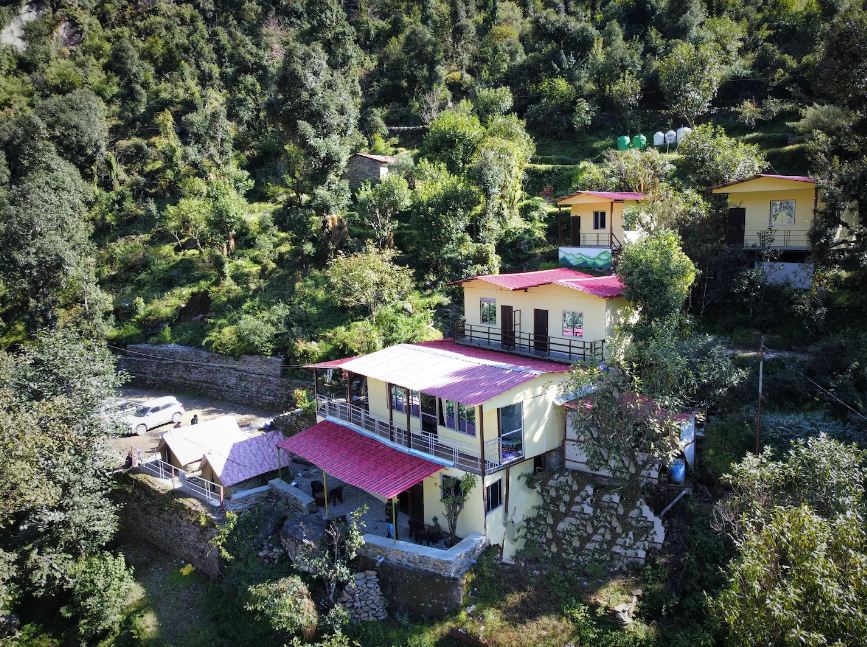

Kedar Camp Resorts; Starting price @3999/
Situated in Rudraprayāg, Hotel Kunj Kedar offers 4-star accommodation with a terrace.
The nearest airport is Dehradun Airport, 193 km from Hotel Kunj Kedar.

